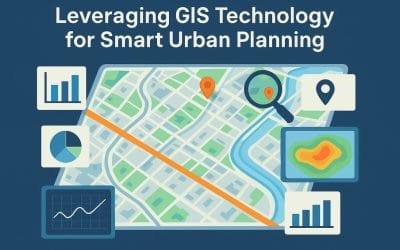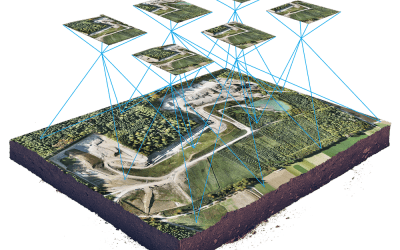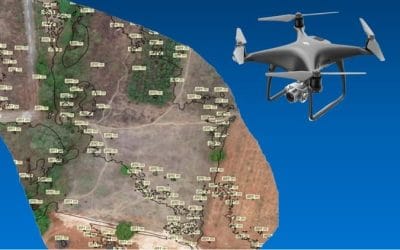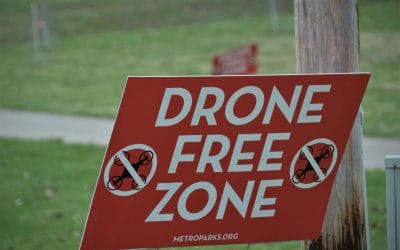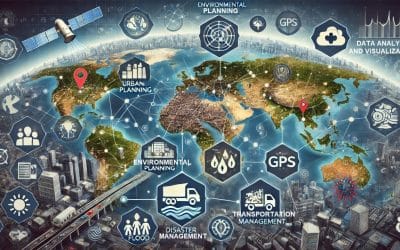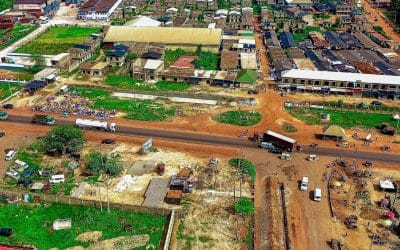GIS IN TRANSPORTATION
One of the main pillars of any nation’s economy is the transportation sector. Transport systems facilitate the movement of goods and people as they engage in social and economic activities. The majority of jobs have been automated, both in the transportation and industrial sectors. Geographic information systems are computer programs used for construction management, environmental evaluation, transportation safety, accident investigation, and highway maintenance.
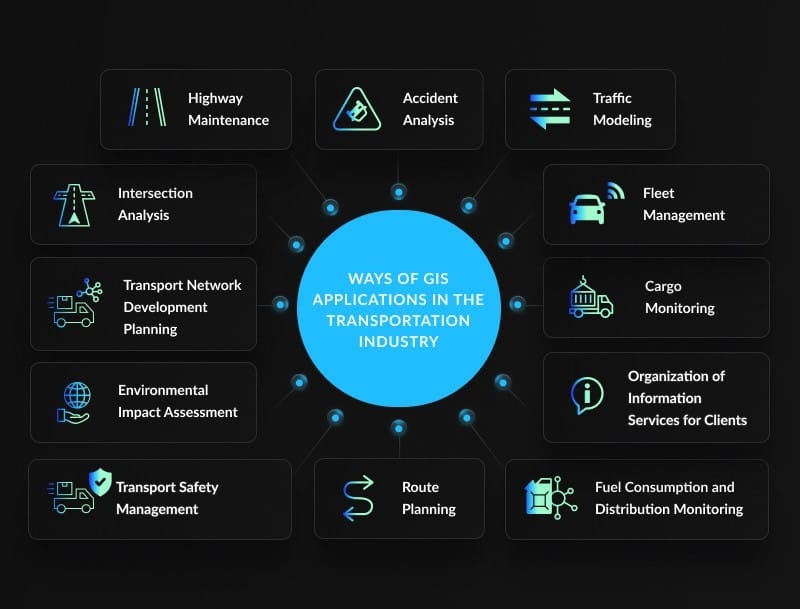
Thus, the descriptions of a few GIS applications in transportation are as follows.
- HIGHWAY MAINTENANCE: The emergence of geographic information systems has made highway maintenance easier and more affordable during the past few years. Real-time imagery of highways can be captured by satellites, highlighting problematic regions. GIS also provides a variety of digital maps to the government and other pertinent authorities so they may make decisions. GIS databases may be fed with information about roadway structures and accessible from anywhere.
- ACCIDENT ANALYSIS: It is simple to combine satellite image systems and CCTV in most cities and towns with GIS. Location addressing is used to alert emergency responders of an accident so they can provide assistance. In the case of an accident, GIS might serve as a source for a report.
- TRAFFIC MODELLING: The world’s cities are crowded with automobiles. Heavy traffic and difficult-to-manage traffic bottlenecks are caused by the government’s inability to regulate traffic adequately. The majority of nations are switching to computer systems for traffic management and structural design in response to the profound advancements in computer technology. With regard to traffic management, GIS has provided excellent options for the various extensive road networks found in cities and towns. Since only the greatest road, rail, and aviation designs are built, this has shown to reduce traffic. In addition to keeping an eye on these transportation networks while they are being created, GIS also provides traffic monitoring and visualization services.
- ROUTE PLANNING: The routes on which new projects are to be set out must be approved by field specialists before any new roads or railroad lines can be built. Longer routes, such as those using roads and railroads, will require more resources and increase trip times. Road and rail engineers are required to find the quickest and most effective ways when navigating roads or rail networks. Longer routes cost more in petrol, hence the user or citizen loses out on road money. Thus, it is necessary to realize shorter, safer, and more effective pathways. However, if manual methods are employed, it becomes challenging to identify the optimal route. When it comes to drainage, soil characteristics, and uneven terrain, GIS is the most appropriate tool to use.
- ENVIRONMENTAL IMPACT ASSESSMENT: On the land, roads, railroads, ports, and airports are typically constructed. Certain structures built in conjunction with transportation amenities may have an adverse effect on wildlife or human life. Building a railroad or roadway across a game park or extremely close to a body of water is a good example. Therefore, the environment is an element that needs to be taken into account because it provides a home for both humans and other living things. As projections of what may occur if a particular infrastructure was launched in a particular location are elaborated, GIS steps in to provide assistance. Some people think of pipelines as a way to transfer petroleum products. Aquatic animals die as a result of pipeline leaks. As a result, pipeline transportation of petroleum and its products is another duty carried out with appropriate GIS integration, since the environment would be most negatively impacted in the event of an error.
- CONSTRUCTION MANAGEMENT: Before beginning actual building, structure simulations must be carried out utilizing GIS related software for airports. The design and modeling process includes the creation of three-dimensional images. Drone technology can be combined with GIS during construction to aid in the visualization of work in progress. After that, mistakes can be fixed, and a variety of land properties are fed into GIS for more planning. Moreover, design templates that describe potential projects like highways, airports, or ports can be made possible with the usage of GIS.
- TRANSPORT SAFETY MANAGEMENT: Regulations and public education about the proper use of specific transportation facilities can both benefit from the information gathered from various transport structures. For improved communication between vehicles and pedestrians attempting to cross highways, crossing points including railroad crossing points can be integrated with GIS. In order to identify the causes of accidents, GIS is also used to study areas that are deemed “black spots” that are prone to mishaps.
GIS IN PUBLIC HEALTH
The vital field of public health works to raise community well-being on a global scale. Technological developments have had a significant impact on public health professionals’ job methods over time. Geographic Information Systems (GIS), which integrate specialist software with geospatial data to deliver insightful analysis, is one such breakthrough that has completely transformed the profession. GIS has shown to be a very useful technology for mapping diseases in public health.
The Impact of GIS on Disease Surveillance
A key component of public health is disease monitoring, which directs efforts toward prevention and control, tracks illness trends, and assists in the identification of outbreaks. GIS offers a strong foundation for disease surveillance that makes it possible to monitor and analyze health data in real time.
Public health experts can monitor the spread of diseases, pinpoint high-risk locations, and distribute resources appropriately by utilizing GIS capabilities. For instance, GIS made it easier to see infection hotspots during the COVID-19 pandemic, which assisted authorities in making decisions about the implementation of focused interventions and public health campaigns.
GIS is essential for tracking and monitoring illnesses as well as for comprehending the fundamental causes of disease spread. Comprehensive investigation of illness patterns is made possible by GIS by combining data from multiple sources, including socioeconomic indicators, environmental data, and demographic data.
Real-time data from many sources, including environmental sensors, test results, and medical records, can be integrated with GIS. Early detection of possible outbreaks is made possible by the integration of data sources, which offers a comprehensive picture of illness patterns.
GIS can be used, for instance, to track the occurrence of vector-borne illnesses like dengue fever and malaria by examining data from weather patterns, human case records, and mosquito capturing stations. To stop the spread of these diseases, public health officials can identify high-density disease vector locations with conducive environmental conditions and target vector control efforts accordingly. The assessment of methods for disease prevention and control can also be aided by GIS. GIS can offer important insights into the efficacy of interventions by evaluating their effects, such as immunization campaigns or health education initiatives.
All things considered, GIS has transformed illness monitoring by offering a thorough and dynamic method of comprehending and battling diseases. Because of its capacity to show disease trends, integrate and evaluate heterogeneous datasets, and facilitate evidence-based decision-making, it has become an essential tool for public health professionals around the globe.
GIS IN AGRICULTURE
Precision farming combines cutting-edge modern technologies with a developed agricultural sector. With the advancement of robotics, GPS, and unmanned aerial vehicles (UAV), many farm activities are now mechanized. GIS is a crucial part of automated field operations, which are sometimes referred to as satellite farming or precision agriculture. Utilizing soil resources and outside data sources more effectively at each location is made possible by precision farming. Spatial data, including an examination of spatial variability, and simulation models for the categorization of the activities that take place are essential for precision agricultural research. Data storage, analysis, and presentation systems for spatial information are known as geographic information systems, or GIS.
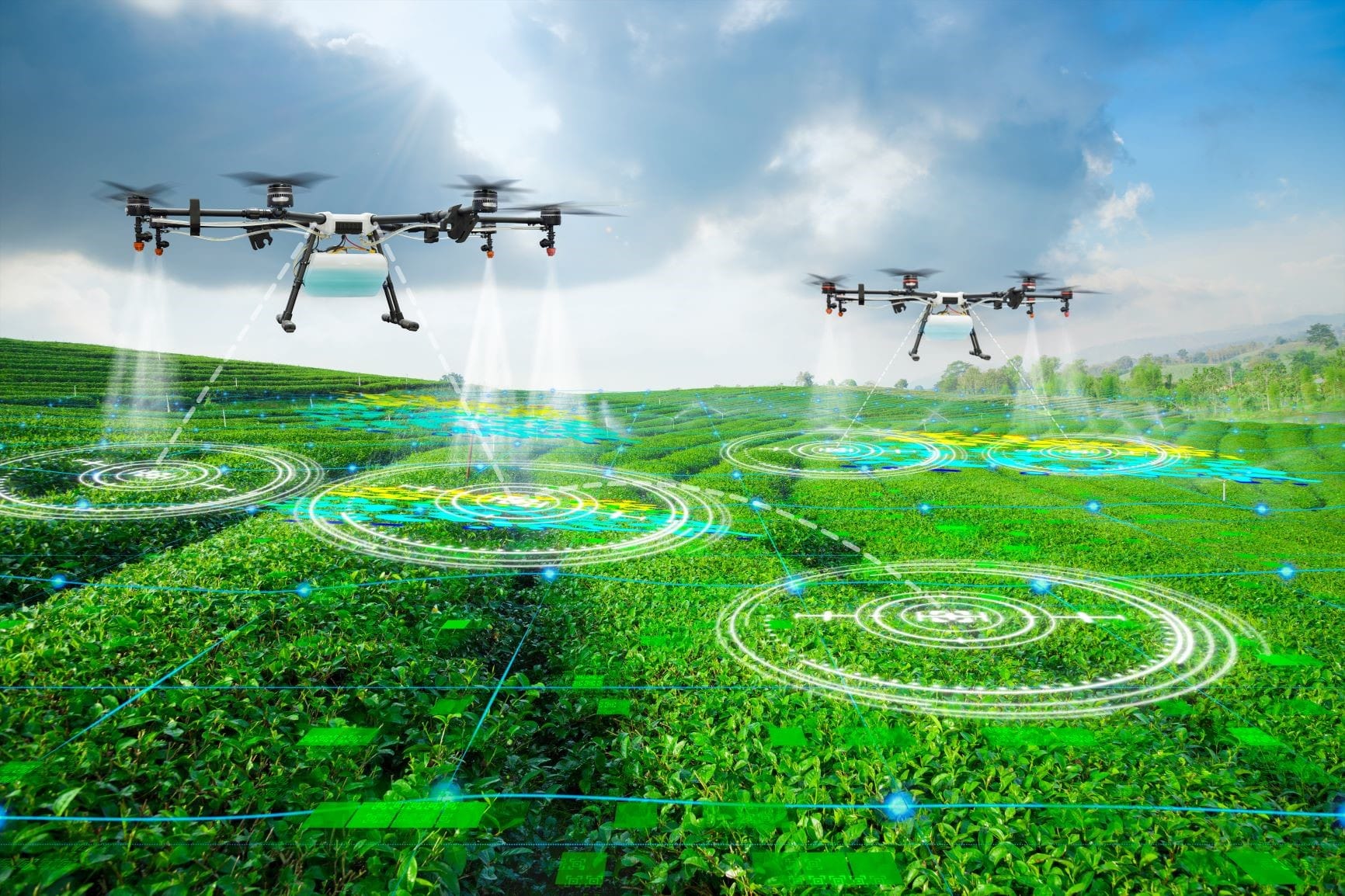
GPS-based tools are used in precision farming for crop scouting, yield mapping, soil testing, field mapping, tractor navigation, and farm organization. When working in low visibility environments like rain, dust, or fog, farmers can use GPS. GPS and GIS can be used to collect the data needed to improve the usage of land and water.
Improved use of fertilizer and organic manure, determining the economic threshold for managing weed and pest infestations, and conserving resources for use by future generations are all ways that farmers can increase their profits. Crop specialists use tough data gathering devices with GPS for precise positioning to map weed, bug, and pest issues in the field. Problem areas with crop pests can be located and mapped to inform recommendations for future management techniques. These applications includes;
- Crop yield mapping and estimation
- Crop health and monitoring
- Crop suitability assessment studies
- Irrigated landscape modeling
- Analysis of soil and irrigation reforms
- Erosion detection models and remediation
- Agricultural mapping for LULC
- Change detection studies
- Land degradation assessment





























































































